Technology
iGaming news | Net loss narrows at Genius Sports in Q1
Genius Sports reduced its net loss to US$8.2m and almost tripled its adjusted EBITDA in Q1 2025. The sports technology company’s net loss was narrowed by $17.from $25.5m in Q1 2024, while adjusted EBITDA climbed 188 per cent from $6.9m to $19.8m. Group revenue rose 20 per cent to $144m, with Betting Technology, Content and […]

Genius Sports reduced its net loss to US$8.2m and almost tripled its adjusted EBITDA in Q1 2025.
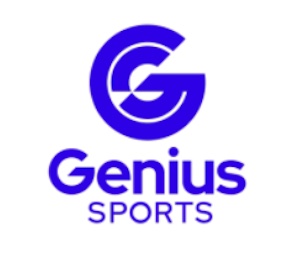
The sports technology company’s net loss was narrowed by $17.from $25.5m in Q1 2024, while adjusted EBITDA climbed 188 per cent from $6.9m to $19.8m.
Group revenue rose 20 per cent to $144m, with Betting Technology, Content and Services the key driver, with revenue rising 44 per cent to $106.5m.
Sports Technology and Services revenue rose 12 per cent to $11.6m, but Media Technology, Content and Services revenue declined by 27 per cent, which Genius Sports attributed to “lower programmatic and social advertising services.”
“This quarter demonstrates the strong execution of our strategic objectives, as we continue our technology distribution, product innovation, and commercial momentum,” said Mark Locke, Genius Sports’ co-Founder and CEO.
“Our largely fixed cost base, coupled with several durable growth drivers, reinforces our confidence in delivering sustainable growth, profitability, and cash flow in 2025 and beyond.”
Genius expects group revenue of approximately $620m and group adjusted EBITDA of around $125m in 2025, which would translate to growth of 21 per cent and 46 per cent, respectively.
Technology
How Star Sports and Ben Keith carved out a bookmaking niche
Tom Waterhouse of Waterhouse VC profiles Star Sports founder Ben Keith and outlines the lessons he has learned on his way to success. Last month, we explored the mindset and methods of elite tennis bettor Tom Dry, revealing how he built his extraordinary success. This month, we flip the lens – from bettor to layer […]

Tom Waterhouse of Waterhouse VC profiles Star Sports founder Ben Keith and outlines the lessons he has learned on his way to success.
Last month, we explored the mindset and methods of elite tennis bettor Tom Dry, revealing how he built his extraordinary success. This month, we flip the lens – from bettor to layer – and profile Ben Keith, the charismatic founder of Star Sports, one of the UK’s biggest and most respected independent bookmakers.

Ben’s story is one of resilience and relentless determination. Today, his impact in the UK market is visible across 18 Star Sports shops, numerous racecourse pitches and a growing online presence through his brand, but also PricedUp, Planet Sport Bet and NRG Bet. He now employs over 300 staff.
Unlike the corporate giants, Ben is comfortable taking bets from just about anyone. He plays the man and bets to figures. In doing so, he has built a business that stands liabilities most would duck – making him a true outlier in today’s operator market.
Where it began
Ben’s journey started at Hove greyhounds. Barely a teenager, he was reluctantly dragged to the track – but a £2 winning Tote bet on Sara Jones, the spring of the traps, dust in the air and the roar of the crowd left an instant impression. He was hooked. From that night, he knew he’d found his calling.
He quickly became the school bookmaker, taking bets from students and teachers on everything from school sports, to the next head boy. He washed cars on weekends to afford The Sporting Life and Racing Post and spent every spare moment in the betting ring – ferried from track to track by his father. Before his first day of work experience at Hove, his dad offered a parting line that stayed with him ever since:
“Take the good, leave the bad.”
Learn from the best
The betting ring became Ben’s university and the bookmakers were his professors.
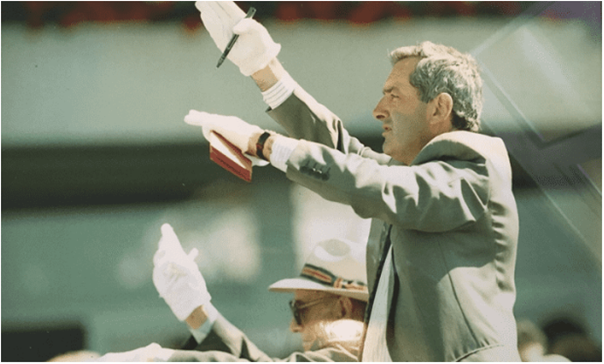
One of the earliest was Martin “Lofty” Chapman, who taught him how to price a race, balance a book and communicate odds with tic-tac. Today, Chapman remains an integral part of the Star Sports team – a regular presence at pitches across the UK.
While still a teenager, Ben also gained experience at City Index, working in the sports spread betting division. There, he encountered Martin Johnstone, whom he later described as City’s “shrewdest and most successful punter”.
In his late teens, Ben would start watching Martin at work in Bournemouth. The chance to learn from someone who operated on both sides of the fence – as a pro punter and a bookmaker – was formative.
“He was the perfect example of both a professional punter and bookmaker.”
Missed opportunity
Ben returned to City Index, where he had previously been promised a full-time role once his A-levels were complete – thankfully, passing them wasn’t a condition. A couple of years later, a new spread betting job came up in Gibraltar, which he accepted. But, in Ben’s view, the venture wasn’t going anywhere fast.
His boss, however, might have been. He was working for a young Tony Bloom, who was already making money trading Asian handicap football markets. But that world held little appeal. So when he landed a £10,000 win on the aptly named Pension Fund, he handed in his notice the very next day to become an on-course bookmaker.
Asked if there were early signs of Bloom’s future success, Ben doesn’t hesitate: “Absolutely. Tony was a very professional and hard-working chap. I was just a complete idiot and nothing would have stopped me from going to become a racecourse bookie.”
Painful lessons
Ben launched his on-course business with a £10,000 float – but it didn’t last.
“I lost my float within weeks and spent the rest of my 20s suffering, being mocked and learning very hard lessons. It took years off my life with stress, while those who worked for Tony became immensely wealthy. I was a fool.”
His twenties were defined by trial and error. He kept going – falling, standing up again and pushing forward – with a high tolerance for risk.
“When you’re skint, you can play like a lion.”
One person who saw this hunger up close was Gary Woodgate, then behind the counter at the Ladbrokes in Brighton.
“Gary knocked back my team of putter-onners’ bets. I was a professional gambler. It was with this money I built a bookmaking business. My punting paid for my bookmaking mistakes, lessons and growth.”
Ben quickly recognised Gary’s skills complemented his own and, after a lunch discussing the vision, Gary joined him. He would go on to become Ben’s right-hand man.
Building a brand
The pair cut their teeth at Walthamstow dogs, building a reputation and slowly growing a shop business. The early days were tough. As newcomers, they were effectively fresh bait for sharp bettors and had to learn quickly to survive.

The turning point came with the rise of tele-betting – taking bets over the phone. Ben saw the potential early. Bigger punters started to find him and he moved to London to network and chase the action more seriously.
From day one, Star Sports focused on doing the basics right: paying winners promptly, accommodating large bets and building strong, personal relationships with customers. It sounds simple – but in today’s industry, it is rare.
Walk into a Star Sports shop today and you’ll be greeted by staff who know the game – and know their customers. Ask for a bet on the Derby and you won’t get a blank look.
The approach has given Ben the confidence to open shops in the most competitive locations, trusting that good service and well-kept shops – where bigger operators often fall short – will bring business his way.
“Go right amongst the competition. And compete on everything (except price).”
Customer acquisition
Star Sports has carved out a niche at the top end of the market. At Cheltenham and Ascot, they trade seven-figure positions and cater to high-value punters. Ben knows he can outdo the big corporates on-course and in the shops by offering a level of service that their scale simply can’t match. That connection between punter and bookmaker breeds loyalty – and puts rest to the idea that betting shops are a thing of the past.
His approach to acquiring and retaining customers is refreshingly traditional.
“Look somebody in the eye. Shake their hand. Give them your attention. What service do they want? Connect with them. If you can’t find punters in a betting ring and you’re a bookie, I’m afraid you’re in the wrong game”
Ben doesn’t deal in illusion. His edge is built on clarity – of people, of situations, of risk. His guard is never down.
“I like to look at the man. I like to see: How does he behave when things change? I like to break his stride – to see his reactions when plans go awry. If anything is hidden or unclear, I am worried. You must see what you are looking at.
“I have only fallen when hope and greed have got the better of me. A clever gambler will play to your greed to pull you in. He will throw out sprats to catch his mackerel. Stop believing. Start watching and listening.”
What’s next?

Scroll through Ben’s social media and you’ll find a man who is passionate about food, conversation and learning from others.
“I like to eat something different every night, with someone from a different demographic. A balanced diet, both in your tummy and mind, leads to a healthy body and soul.”
It is a philosophy that mirrors his broader view of the game: adapt or be outpaced.
“Gambling is the ultimate Darwinism.”
He’s also a devoted supporter of greyhound racing – and in 2021, he won the GWA Services to Greyhound Racing Award. While he continues to build Star Sports, his success is reflected through a growing property empire, having acquired over £150 million worth of assets across six countries (Source: Star Property).
“All of my money goes into property. One day, cleverer bookies will come along. When that happens – and the wave goes over – I want to have something to show for it.”
Power of the Network
Ben’s story is a reminder of what it takes to succeed in one of the toughest businesses around – where your customers are actively trying to put you out of business. He’s not just a bookmaker, but a sharp, driven entrepreneur.
At Waterhouse VC, we’re fortunate to have individuals like Ben in our network – people who bring deep insight, real-world experience and a willingness to help others navigate the complexities of the industry.
If you know any gambling tech companies seeking capital or distribution support, our new ‘Pitch Us‘ page makes it simple to connect with our investment team.

Waterhouse VC is a fund that specialises in global publicly listed and private businesses related to wagering and gaming sectors. The fund is only available to wholesale investors.
Since inception in August 2019, Waterhouse VC has achieved a gross total return of +3,133% (annualised at 84%), as at 30 April 2025, assuming the reinvestment of all distributions.
Technology
The Best Digital Fitness and Wellness Solutions for Mind-Body Health in 2025
19 May The Best Digital Fitness and Wellness Solutions for Mind-Body Health in 2025 Photo by Andrea Piacquadio The wellness space has rapidly adapted to meet the demands of modern life. From remote work to virtual training, health-conscious individuals and professionals alike are turning to digital platforms for structure, community, and consistency. What used to […]

19 May The Best Digital Fitness and Wellness Solutions for Mind-Body Health in 2025

Photo by Andrea Piacquadio
The wellness space has rapidly adapted to meet the demands of modern life. From remote work to virtual training, health-conscious individuals and professionals alike are turning to digital platforms for structure, community, and consistency. What used to require in-person access is now available across devices, making wellness more inclusive and flexible than ever before. As the wellness industry becomes more personalized, the value of targeted platforms grows. This piece explores three leading platforms—YogaVibes, TrainerMetrics, and BaptisteYoga—each serving a different but equally important purpose in the evolving landscape of health and fitness.
YogaVibes: Extensive Online Yoga Classes and Corporate Wellness
YogaVibes is a prime example of a small business that has successfully adapted to the virtual environment, offering a comprehensive range of wellness classes accessible worldwide. Since its inception, YogaVibes has streamed over 7 million sessions, including yoga, barre, mat Pilates, and meditation classes, serving more than 40,000 customers across 200 countries.
A key feature of this platform is its vast library of over 2,000 on-demand streaming class videos. These classes are available at any time, allowing users to practice yoga and related disciplines at their convenience. Additionally, YogaVibes hosts live classes daily via Zoom, enhancing the interactive experience for users who prefer real-time instruction.
In response to the increasing demand for corporate wellness solutions, YogaVibes expanded its offerings in 2020 to include organizational memberships. These memberships are designed to provide affordable access to virtual classes for employees, affiliates, and members of various organizations. The corporate wellness programs have reached over 375 clients worldwide, including companies in Silicon Valley and Mumbai. This initiative emphasizes the safety and convenience of practicing wellness virtually, particularly valuable in a time when remote work and social distancing are prevalent.
YogaVibes sets itself apart by blending accessibility, variety, and corporate engagement, making it a versatile platform for both individual practitioners and organizations looking to support their members’ well-being.
TrainerMetrics: Integrated Fitness Management for Trainers and Clients
TrainerMetrics is a specialized software platform developed for personal trainers and fitness coaches, offering a unified system to manage client relationships, track progress, and handle business operations. The platform combines essential tools into one interface, enabling users to oversee workout plans, monitor performance data, and maintain up-to-date progress records with ease.
One of the platform’s core strengths lies in its structured client management system. Trainers can log and review a variety of client metrics, including workout histories, measurements, and progress photos. Additionally, built-in scheduling tools and appointment booking features simplify session planning and time management. Trainers can design and assign tailored workout programs, while clients can follow routines and log their activities directly.
TrainerMetrics also supports communication through integrated messaging features, helping maintain consistent engagement between trainer and client. On the business side, the platform includes invoicing, billing, and payment tracking functionalities, making financial administration more manageable for independent professionals and small studios alike.
With its mobile-friendly design, TrainerMetrics ensures that both trainers and clients can access important information from any device. As an all-in-one fitness management solution tailored specifically for personal training, it offers a practical alternative to generic fitness apps by combining data tracking, coaching, and operational tools in one streamlined platform.
BaptisteYoga: The Official Hub for Power Vinyasa Yoga
BaptisteYoga serves as the official website for the Baptiste Power Vinyasa Yoga method, a dynamic style founded by Baron Baptiste. This platform primarily caters to practitioners and teachers interested in the distinctive Baptiste approach, which emphasizes strength, mindfulness, and personal transformation through yoga.
A significant aspect of Baptiste Yoga is its comprehensive educational offerings. The site provides detailed information about Baptiste Yoga teacher training programs, including immersive retreats, workshops, and certification courses conducted worldwide. These trainings are designed not only to deepen practice but also to empower participants to share the method effectively with others.
In addition to training, BaptisteYoga maintains a calendar of live events and workshops led by certified Baptiste instructors. This calendar helps connect yoga enthusiasts with opportunities to deepen their understanding of the method and its philosophy.
The platform also fosters a sense of community by linking users to Baptiste-affiliated studios and local instructors around the globe. Educational resources such as articles, videos, and practice guides further support practitioners in exploring the method’s principles, alignment techniques, and flow sequences.
What distinguishes BaptisteYoga is its role as the central hub for a specific yoga tradition with a focus on transformation and empowerment. This focus differentiates it from more general yoga websites, making it a valuable resource for those who seek depth and connection within this particular style.
Conclusion
From personalized fitness tracking to immersive yoga teacher training, these platforms show the diverse ways wellness goals can be supported online. YogaVibes offers variety and convenience for everyday practice, TrainerMetrics simplifies client management for trainers, and BaptisteYoga fosters a deep connection to a powerful yoga method. Each one stands out not just for its functionality, but for how well it understands the needs of its specific user base. These digital tools reflect the growing demand for flexible, purpose-driven health solutions. As 2025 unfolds, resources like these are helping more people engage with health and wellness on their own terms.
More information:
—-
The information on MedicalResearch.com is provided for educational purposes only and may not be up to date. It is in no way intended to diagnose, cure, or treat any medical or other condition. Some links are sponsored. Products are not warranted or endorsed.
Always seek the advice of your physician or other qualified health and ask your doctor any questions you may have regarding a medical condition. In addition to all other limitations and disclaimers in this agreement, service provider and its third party providers disclaim any liability or loss in connection with the content provided on this website.
Last Updated on May 19, 2025 by Marie Benz MD FAAD
Technology
Female Sports Advocacy Group Sues Minnesota Over Trans Policies
A group is targeting Minnesota over its policies accepting transgender girls in high schools women and girl’s sports teams, claiming the state puts female students at risk by allowing male students to compete if they claim a female gender identity. Female Athletes United, which says it “advocates for fairness, safety, and equal opportunity for women […]

A group is targeting Minnesota over its policies accepting transgender girls in high schools women and girl’s sports teams, claiming the state puts female students at risk by allowing male students to compete if they claim a female gender identity.
Female Athletes United, which says it “advocates for fairness, safety, and equal opportunity for women and girls in sports,” sued Minnesota Attorney General Keith Ellison (D), as well as three state officials and three school boards, on Monday in the US District Court for District of Minnesota. The group claims the state is subverting the purpose of Title IX by …
Technology
The fitness tracker most amateur athletes should buy
The Vivoactive 6 is a surprisingly robust fitness smartwatch with advanced training tools and key sport features that make the watch one of Garmin’s best-value offerings. It doesn’t pack a ton of smart features or ECG support, but it nails the basics and packs in many of Garmin’s best features for under $300. That makes […]
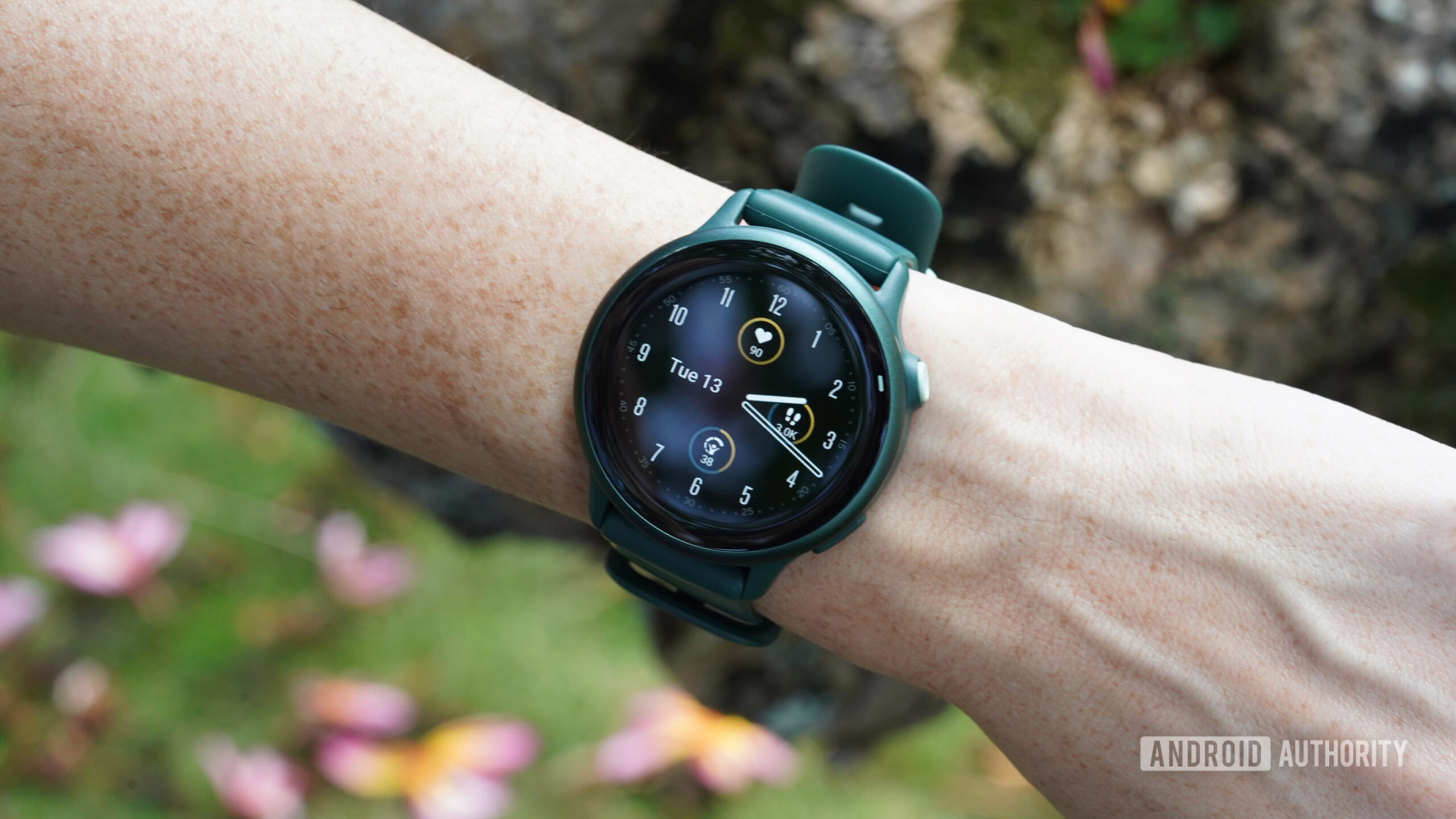

The Vivoactive 6 is a surprisingly robust fitness smartwatch with advanced training tools and key sport features that make the watch one of Garmin’s best-value offerings. It doesn’t pack a ton of smart features or ECG support, but it nails the basics and packs in many of Garmin’s best features for under $300. That makes it an easy recommendation for most amateur athletes.
After three weeks with Garmin’s newest Vivoactive 6, I’m fairly convinced it’s the fitness tracking watch most amateur athletes should buy. Not because it does everything, but because it does exactly what matters, without overcomplicating your wrist (or torching your wallet). The brand’s higher-end wearables like the Fenix and Epix lines come packed with maps, metrics, and battery stats to withstand a multi-week expedition, but unless you’re training for a back-country sabbatical, the Vivoactive 6 is lighter, more comfortable, and every bit as reliable.
A subtly updated experience
The Vivoactive 5 was a major leap over the 4, introducing an AMOLED display and new health features. The Vivoactive 6 continues that momentum with a more polished interface, expanded workout tools, and thoughtful refinements that make it an even better fit for everyday athletes.
The most immediately apparent change is the device’s completely revamped user interface. Garmin redesigned the settings, controls, and overall navigation system to be more intuitive, giving the Vivoactive line a smoother, more modern feel. If you’re new to Garmin devices, you’ll likely appreciate the layout. However, if you’ve been using Garmin watches for years like I have, you might feel a bit thrown off as your muscle memory adjusts.
A redesigned UI experience may take getting used to for Garmin loyalists, but it’s designed to be intuitive in the long run.
To be honest, I found the changes frustrating at first, and while I’ve mostly adjusted, I still occasionally fumble for old shortcuts that no longer exist. I am only now getting used to a long press not taking me to my settings.

Kaitlyn Cimino / Android Authority
Cosmetically, the Vivoactive 6 stuck to the 5’s single 42mm case size (instead of going back to two options like the 4), which is disappointing. Fortunately, it’s a comfortable middle ground for most wrist sizes; not too oversized or too petite. The build itself is sleek and minimalist, with a tweaked button design I really like. Overall, the device is slightly more casual than the Venu 3’s upscale look without going too cheap. It is available in four colors, including the Jasper Green pictured above, a soft pink, and two neutrals. For all-day wear, I found the watch very comfortable and incredibly lightweight (just 23g) compared to almost every other watch I own, especially during workouts.

Kaitlyn Cimino / Android Authority
On that front, Garmin expanded the device’s sport profile options, adding about 50 new workout types. This gives the Vivoactive family more versatility, even if it isn’t an everything-but-the-kitchen-sink lineup. Garmin also improved the device’s customizable data pages so you can now add up to eight data fields per screen instead of just four. I was personally excited to see animated workouts return to the lineup, which I like to use for HIIT sessions.
The Vivoactive 6 adds a few advanced training tools and customization options, plus animated workout guidance.
Meanwhile, for avid runners, the watch now supports the brand’s PacePro and Running Dynamics (ground contact time, stride length, etc.). These features are readily available on Garmin’s higher-end models, so it’s nice to see them trickle down to the Vivoactive series. I dipped into the device’s added navigation options for following routes (breadcrumb style), which are useful albeit simple. Like the Venu series, there are still no maps here.
For walkers, the watch adds Daily suggested workouts, though I found these often underestimated what I was up for doing each day. Then again, I love to walk excessively and maybe Garmin knows better what is actually a healthy amount. Notably, the watch does not feature a barometric altimeter, so if you want to track altitude on your hikes, you’ll need something higher up in Garmin’s range.
Finally, for sleeping off more grueling workouts I was excited by the addition of Smart Wake Alarm, which is relatively new to the Garmin ecosystem. The watch uses sleep data to wake users during a lighter stage of sleep within a set window (up to 30 minutes before your chosen alarm time). It may sound like a subtle feature, but it can make a real difference in how rested you feel when you wake up. You also can choose to use the feature or not from alarm to alarm. Compared to a regular alarm in your list, one with Smart Wake enabled features a star icon.
For healthier wake ups, Garmin adds Smart Wake alarms.
Unfortunately, I didn’t get many nights of adequate sleep during this review, so Garmin rarely saw fit to wake me earlier than the last possible moment (my set time). Still, I appreciated the personalized approach and look forward to more restful nights ahead. For now, the alarm haptics weren’t too jarring while managing to wake me up without disturbing my partner.
Accuracy where it counts

Kaitlyn Cimino / Android Authority
As always, features are fairly meaningless without accuracy. While some features, like perceived exertion or even sleep stages, are either subjective or hard to verify, others are quite straightforward.
On the heart rate tracking front, I was disappointed to see the watch land without Garmin’s latest Elevated heart rate sensor. This means we don’t get ECG support like on the Venu 3, and also just simply don’t get the most powerful heart rate tracking tech available. That might not matter to most casual users, but if you’re interested in ECG functionality or need more advanced heart metrics for medical or training purposes, this could be a dealbreaker. It also keeps the Vivoactive 6 and 5 more similar than I was hoping.

I tested the device’s heart rate tracking in a variety of conditions including everything from long outdoor runs to high-intensity interval training, and for the most part, it consistently delivered accurate data. However, it did occasionally struggle during weight lifting and rowing, both of which can put more strain on your wrist. You can see in the graph above where the watch dropped off rather than keeping up with my dedicated chest strap. This was surprising to me as I’ve always found Garmin devices largely very reliable. It is possible it could be a fit issue, however, and I’m keen to continue testing.

Likewise, GPS accuracy is another Vivoactive 6 highlight. I tested the watch on a mix of city runs, trail hikes, and suburban loops, and tracking was consistently spot-on. Its signal locked on quickly and without issue. According to its specs, the watch features updated GPS, (adding Beidou & QZSS), but I didn’t notice any significant change.
It still does not feature dual frequency like Garmin’s pricier models, and though it generally performs as well as devices that do, there might be some cases where it won’t. In that map above, for example, the Apple Watch Ultra 2 traced my actual route, a tree-lined neighborhood run, while the Vivoactive 6 recorded me slightly off my route and at one point, on the wrong side of the road.
For better or worse, still not a full-out smartwatch

Kaitlyn Cimino / Android Authority
The Vivoactive 6 excels as a fitness-first device for athletes who want a reliable, comfortable workout companion at a good price. As a smartwatch, the Vivoactive 6 keeps things minimal. You get smart notifications, music storage, and contactless payments, which is enough for me to head out without my phone or wallet. There’s still no speaker or mic onboard for phone calls or voice assistants and certainly no LTE support like I was hoping.
I initially wanted to see more smart features, but in the end enjoy the distraction-free experience.
Yet, call me fickle, but I actually found that to be a plus. The stripped-down approach keeps me focused on what Garmin does best (tracking my fitness) without layering on distractions or features I rarely use. I didn’t miss the temptation to fire off elaborate texts, or the ability to answer calls from my wrist. In fact, I appreciated the sense of separation when heading out for a run.

Kaitlyn Cimino / Android Authority
Additionally, without power-hungry smart features like voice assistants or LTE, battery life holds steady, offering the same 11 days in smartwatch mode and up to 21 hours with GPS as the previous generation. Those are impressive specs when you consider the device’s bright AMOLED display. In testing, the watch averaged closer to five days with always-on mode enabled and daily GPS workouts, putting my Pixel Watch 3 and Apple Watch Series 10 to shame.
Garmin Vivoactive 6 review: The verdict

Kaitlyn Cimino / Android Authority
I started this review stating that the Vivoactive 6 is the Garmin tracker most athletes should buy, and I stand by it. It nails the basics, skips the fluff, and helps me focus on fitness mid-workout. It’s also light, comfortable, and packed with just enough smart features to keep things convenient without draining battery. It’s not a full-on smartwatch, but I didn’t miss silencing phone calls at the gym or getting distracted by apps. What I got instead was a reliable training partner that packs in many of Garmin’s best tools. For $299, that’s not bad.
The Vivoactive 6 is a well-priced, reliable fitness tracker packed with more than enough tools for amateur athletes.
If you’re chasing serious trail maps or want a wrist-based assistant, Garmin’s more full-featured lines will serve you better. The Venu 3 ($449.99 at Amazon) packs in a few more smart features and ECG support. The latest Fenix 8 ($999.99 at Amazon) comes loaded with advanced training features and detailed mapping. There are also a variety of Forerunner models to consider. In other words, Garmin’s stable is a crowded one.
Outside the house of Garmin, the Apple Watch SE ($269.99 at Amazon) is a great pick for iOS users who want a few more smart features while still accessing accurate fitness tracking. Google’s Pixel Watch 3 ($349.99 at Amazon) is a pricier, but equally solid smartwatch option for Android phone users.
Technology
UTSA Athletics taps School of Data Science to maintain competitive edge
Sophia Kennedy, UTSA director of sports performance for Olympic sports, says these technology tools help coaches and trainers assess player workloads and injury risks so coaches can align training efforts with performance goals. “If you want to be competitive in collegiate athletics, then you want to have the best technology,” she said. Kennedy regularly relies […]

Sophia Kennedy, UTSA director of sports performance for Olympic sports, says these technology tools help coaches and trainers assess player workloads and injury risks so coaches can align training efforts with performance goals.
“If you want to be competitive in collegiate athletics, then you want to have the best technology,” she said.
Kennedy regularly relies on data from these devices to tailor training programs for UTSA athletes. Kennedy added that many coaches and trainers may lack the technical background to fully utilize the tools.
“It’s about keeping up with the competition,” Kennedy said. “That’s why this partnership is really impactful. If you can get people who really understand the data science, then you have a competitive edge.”
That’s where the UTSA School of Data Science comes in. Keying Ye, a professor of statistics in the Department of Management Science and Statistics and a core faculty member in the School of Data Science, is among the faculty leading the effort. He believes that data science can tackle each of the challenges UTSA Athletics has identified.
“Our goal is to help Athletics use data-driven methods to improve performance, reduce injuries, increase ticket sales and optimize pricing strategies,” Ye said. “I may be biased, but I think as long as we have really good data, we can absolutely accomplish this.”
Ye noted that one challenge is the changing roster of student-athletes.
“There’s some data – especially related to the athletes – that will always be changing, because you’ll always have new athletes coming in,” he said. “We can train some general models with this data, but you never know when you’re talking about college athletes. They don’t have long-term contracts. They come, and they go.”
In addition to player performance, Ye and his colleagues will analyze sales and demographic data to help Athletics refine its ticket pricing and marketing strategies. This may include understanding who buys tickets, their age, location and whether they are UTSA alumni.
“If we have good data, I don’t think it will be difficult to build models to make useful predictions,” he said.
While performance and ticketing data are the focus, the partnership also offers benefits for students beyond Athletics. Ye hopes to involve UTSA students in the work through internships, graduate assistantships and class projects.
“We definitely want to use students as the programmers and as learners,” he said. “We can provide them with experiential learning opportunities and treat them as interns or graduate assistants.”
Depending on the complexity and sensitivity of the data, Ye anticipates involving undergraduate, master’s and even Ph.D. students in research that could provide invaluable experience and academic publications.
“This will help us produce students who have actually gotten their hands dirty working on real-world problems, not just hypothetical ones,” he said. “You can market those kinds of students very easily. Most employers will welcome them, because they can give them projects immediately. So, I want us to be training our students this way.”
Technology
Organizations and companies are partnering to introduce Black students in Detroit to golf
DETROIT — As a fan, Shaun Horne is all about Detroit’s professional sports teams. But when it comes to playing, the high school junior has his eyes on one game. “I only play golf,” Horne said after taking his turn on a simulator inside a gym on Detroit’s westside. Embracing golf makes the 16-year-old a […]
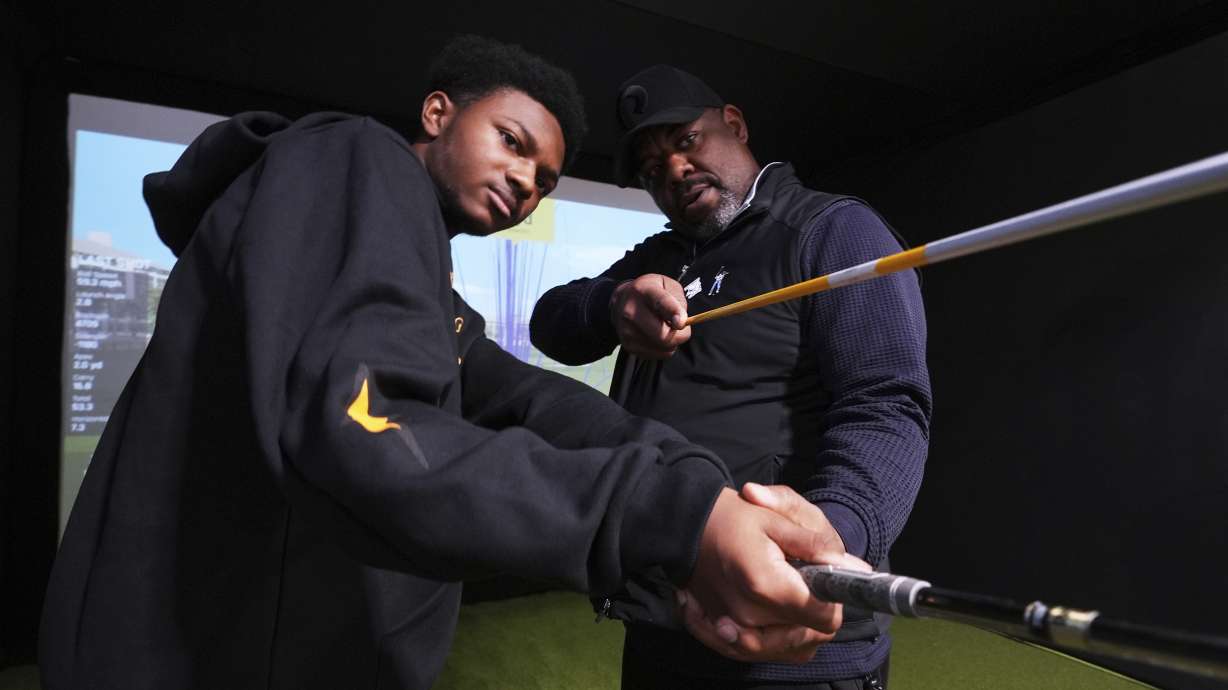
DETROIT — As a fan, Shaun Horne is all about Detroit’s professional sports teams. But when it comes to playing, the high school junior has his eyes on one game.
“I only play golf,” Horne said after taking his turn on a simulator inside a gym on Detroit’s westside.
Embracing golf makes the 16-year-old a rarity among his Detroit peers — particularly Black high schoolers.
Coaches and community groups in the city are taking ambitious steps to spread the game’s popularity among students — noting that only about 50 of more than 14,000 high school students in Detroit’s school district play golf on school teams.
In Detroit, the biggest challenge is exposing Black youth to the game, said Jesse Hawkins, who is Black and coaches Horne’s team at Renaissance High School. Backing from local corporations and nonprofits, providing access to equipment and even college scholarships is helping.
“When you go into high schools and you go into elementary schools often times we’ll hear narratives around basketball players, football games, those things,” Hawkins said. “And golf is really not as propagated as much for our community.”
In Detroit, advocates of increasing play among Black young people have partnered with some of the city’s largest businesses and community organizations. At least two nonprofits offer programs that teach kids how to play golf.
The Rocket Classic has steered nearly $10 million from the annual PGA event held in Detroit to local charitable organizations. Of that, $800,000 has been given to programs that teach kids how to play the game. One program provides access to college scholarships to high school seniors, while upward of 700 children and teens take part each year in programs put on by First Tee of Greater Detroit.
“Golf is the why we get them there, but while we have them there we’re teaching them life skills,” said Carl Bentley, chief executive of First Tee of Greater Detroit, which has donated a golf simulator to the school district. “Learning how to say ‘yes sir, yes ma’am’ — shake a hand properly, how to start a conversation. We’re teaching them life skills and then we get to putting and swinging and things like that.”
Among the 28.1 million Americans who played golf on a course in 2024, about 25% were Black, Asian or Hispanic, according to the National Golf Foundation. Interest is wider when considering those who played or followed professional golf coverage on TV, in writing or via podcasts.
But Hawkins said his experience as a coach suggests Black high schoolers aren’t among that audience.
“You don’t hear kids talking about the latest golf shoes or the cool golf apparel,” Hawkins said. “You’re not necessarily going to get a badge of honor walking into your high school and you’ve got the newest golf shirt.”
Golf and equipment can be pricey, sometimes too pricey for families struggling just to make ends meet.
Detroit, which is just under 80% Black, had a median income of about $39,500 in 2023 compared to $69,100 statewide, according to the census. The city’s poverty level was about 32%. Statewide, that figure was about 13.5%.
A set of good golf clubs can cost a few hundred dollars or more. It’s $28 for juniors to play 18 holes and use a cart weekdays at the two public golf courses in Detroit.
The PGA brought its first event to Detroit in 2019, and city native Dan Gilbert’s Rocket Companies has been its sponsor. The company works with partners to bring the game to Detroit’s youth and cover some of the costs, said Trina Scott, vice president of Civic and Community Affairs at Detroit-based Rock, which is Gilbert’s family office.
“How do we attract Black and brown youth into seeing (golf) as a possibility?” said Scott. “One way of doing that is by making it accessible (and) also eliminating the barriers — being able to have the right clothing to go on a golf course, being able to have the clubs that you need, being able to have the skillset to be confident on the course.”
Mike Schuchard has about a dozen players on his Detroit Cass Tech golf team. That’s about double the number from last season, but only two are considered “varsity level.”
That’s not enough to compete against some suburban schools with strong golf programs.
The first-year golf coach says he’s trying to recruit students who are already interested in others sports.
“These schools are loaded with great athletes, but they just haven’t been introduced to this game, yet,” Schuchard said.
Ahmari Flowers, the senior captain on Cass Tech’s golf team, agrees. He started playing the sport after his freshman year.
“I’m an athletic guy and golf like came easy to me,” said Flowers, 17. “For an athletic person, it’s still a sport, a lot of body movement and all you got to do is control that athleticism and use it to your advantage.”
-

 Fashion2 weeks ago
Fashion2 weeks agoHow to watch Avalanche vs. Stars Game 7 FREE stream today
-

 High School Sports2 weeks ago
High School Sports2 weeks agoWeb exclusive
-

 Sports2 weeks ago
Sports2 weeks agoPrinceton University
-

 Sports2 weeks ago
Sports2 weeks ago2025 NCAA softball bracket: Women’s College World Series scores, schedule
-

 Motorsports2 weeks ago
Motorsports2 weeks agoBowman Gray is the site of NASCAR’S “Advance Auto Parts Night at the Races” this Saturday
-

 NIL2 weeks ago
NIL2 weeks ago2025 Big Ten Softball Tournament Bracket: Updated matchups, scores, schedule
-

 NIL2 weeks ago
NIL2 weeks agoPatty Gasso confirms Sophia Bordi will not finish season with Oklahoma softball
-

 Motorsports2 weeks ago
Motorsports2 weeks agoMOTORSPORTS: Three local track set to open this week | Sports
-

 Motorsports2 weeks ago
Motorsports2 weeks ago$1.5 Billion Legal Powerhouse Announces Multi-Year NASCAR Deal With Kyle Busch
-
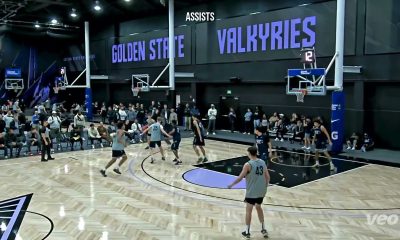
 High School Sports2 weeks ago
High School Sports2 weeks agoMaryland Basketball Recruiting





























